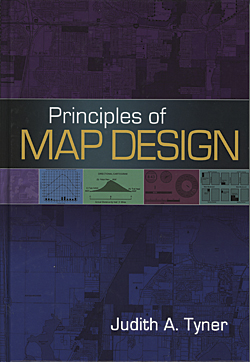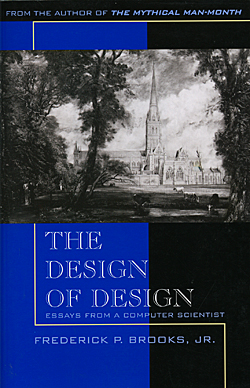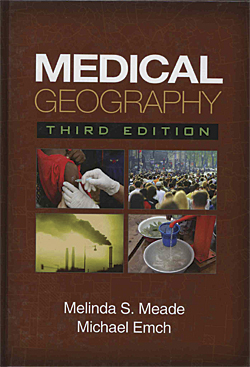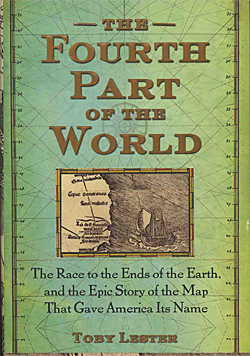GIS Bookshelf
 This article as a PDF . This article as a PDF .
Principles of Map Design
By Judith A. Tyner
This clearly written textbook focuses on the principles of making maps. Not a how-to book, its goal is translating and summarizing current cartographic thought and practice and making this information accessible to students. The design referenced in the title is not narrowly defined as layout or aesthetic considerations but in the broad sense of a decision-making process that encompasses choosing data, an appropriate projection, and symbolization to design an effective map. Topics covered include Web mapping, animated maps, interactive maps, and maps for the visually impaired. "Chapter 5: Critique of Maps" contains a series of map makeovers that show how maps can be modified to better reach the intended audience. The author, a professor emeritus of geography at California State University, Long Beach, taught courses in cartography for 35 years before her retirement. The Guilford Press, 2010, 259 pp., ISBN: 1606235443
 The Design of Design: Essays from a Computer Scientist The Design of Design: Essays from a Computer Scientist
By Frederick P. Brooks, Jr.
The author's goal is to "prod designers and design project managers into thinking hard about the process of designing things, especially complex systems." Rather than discussing what is "good design" versus "bad design," this book discusses the process of design, the nature of design problems, the reality of design activities, and fundamental concepts of design. He characterizes the two areas of design—computer architecture and software architecture—with which he has had the most professional experience as having "short histories and modest reflections," so he also draws on examples from a field with a much longer history: the functional design of houses. Seven case studies round out the book and provide concrete examples of points made in the essays. Brooks, who received the National Medal of Technology for his work on IBM's Operating System/360 and the A. M. Turing Award for his "landmark contributions to computer architecture, operating systems, and software engineering," is also the author of The Mythical Man-Month. Addison-Wesley Professional, 2010, 448 pp., ISBN: 0201362988
 Medical Geography, Third Edition Medical Geography, Third Edition
By Melinda S. Meade and Michael Emch
"Geography is destiny," declared the researchers who analyzed the delivery of health care and the outcomes of medical treatment for The Dartmouth Atlas of Health Care. The authors of Medical Geography provide an inclusive survey of the field of medical geography and introduce students to geographic concepts and methodologies. According to the authors, the term medical geography has grown to encompass the geography of both health and disease; it overarches the biological, environmental, and social sciences; and it uses both qualitative and quantitative methods. Chapters address how geography can be used to analyze the effects of climate and weather, pollution, the occurrence of noncommunicable diseases, the diffusion of communicable diseases, and the delivery of health care. This new edition of a standard text in the field incorporates updated and more extensive coverage of the use of GIS for modeling health and disease throughout. The concluding chapter focuses on scale, spatial analysis, spatial statistics, and geographic visualization. The Guilford Press, 2010, 498 pp., ISBN: 1606230166
 The Fourth Part of the World: The Race to the Ends of the Earth, and the Epic Story of the Map That Gave America Its Name The Fourth Part of the World: The Race to the Ends of the Earth, and the Epic Story of the Map That Gave America Its Name
By Toby Lester
The purchase of the Waldseem�ller map by the Library of Congress in 2003 for $20 million spawned a new wave of books chronicling the intriguing story of the map that gave America its name. That is the story that author Toby Lester set out to write, but the resulting book is much more. It not only tells the fascinating tale of how the map was made but also explores the convergence of ideas and events that made it possible. Like Connections, the popular BBC television series from the 1970s created and hosted by science historian James Burke, Lester's book teases out the seemingly isolated (but actually interconnected) events that helped create the world we know. This macrohistory is organized around the Waldseem�ller map. Each chapter focuses on a small portion of the map and brings the history behind it to life. Illustrated with numerous historic maps, it has been called "a masterpiece of cartographic literature that will be of lasting importance" by Simon Winchester, author of The Map That Changed the World: William Smith and the Birth of Modern Geology. Free Press, 2009, 462 pp., ISBN: 1416535314
|